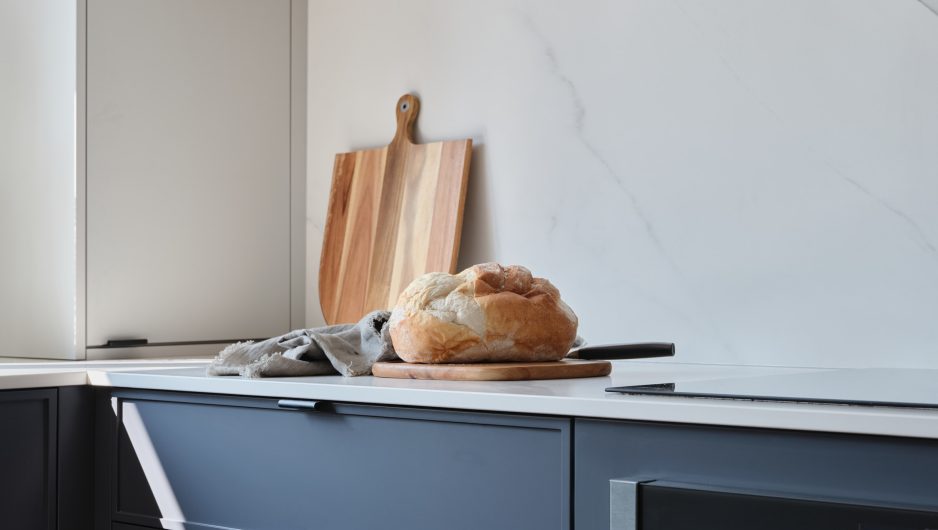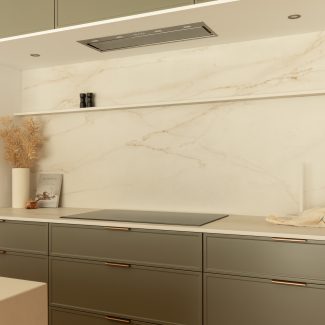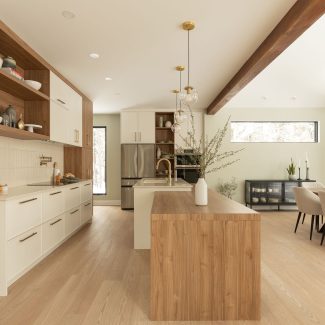Choosing the right kitchen backsplash can completely transform the look of this central room in your home. There are a multitude of options, each offering its own advantages in terms of aesthetics, durability and ease of maintenance. Follow the advice in our how-to guide to make an informed decision for your next kitchen project.
1. Define your budget
As with any renovation project, the first step is to determine the budget you wish to allocate to your backsplash. Determine a realistic budget range, bearing in mind that costs can vary according to the materials chosen, and the size and complexity of the installation.
2. Determine the kitchen style
The backsplash should complement the overall style of your kitchen. Go in search of inspiration and gather the photos that most resonate with you. What do these kitchens have in common? What kind of backsplash stands out? Ideally, you should choose a material that harmonizes with the style you’re looking for:
For a modern kitchen, smooth, sleek materials like glass or stainless steel can help achieve the desired effect.
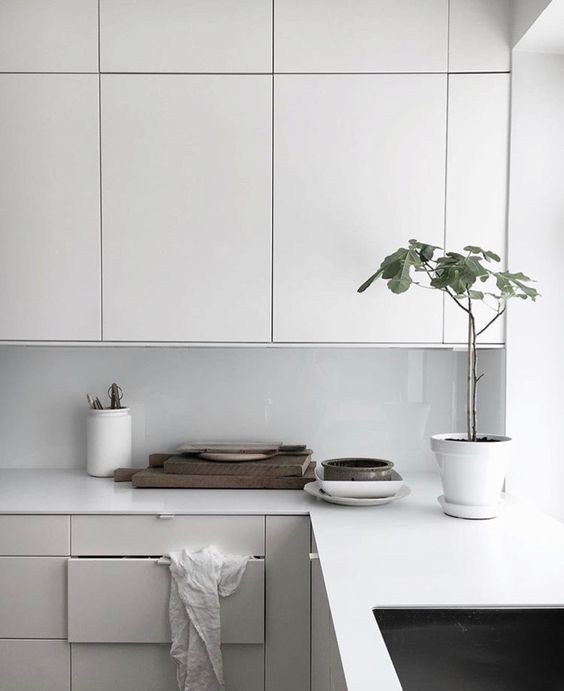
Source : Pinterest
For a rustic kitchen, terracotta or ceramic tiles with traditional patterns may be more appropriate.
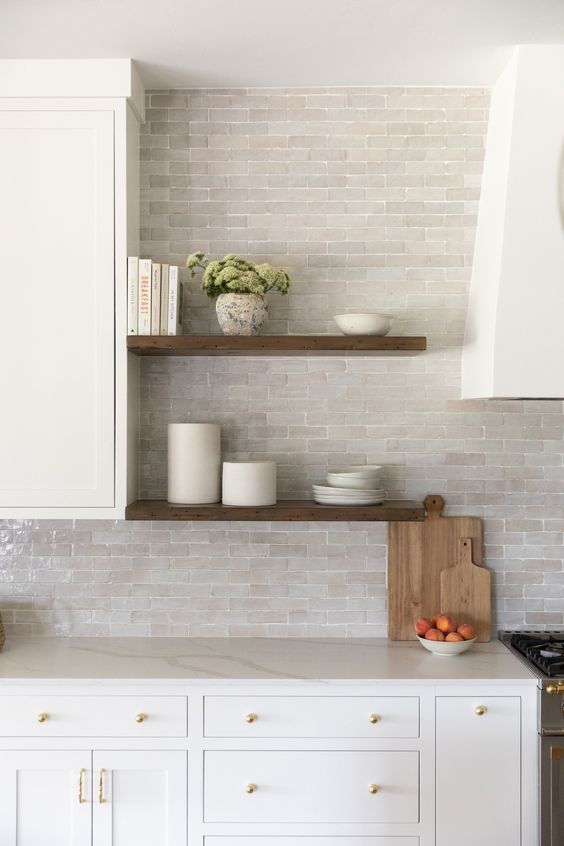
Source: Pinterest
For a more timeless look, consider incorporating metro tiles, a trend that has been a staple in decorating for decades.
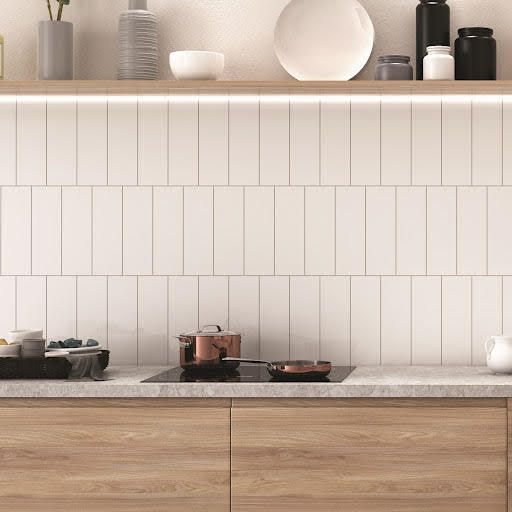
Source: Pinterest
Tip: It’s best to choose the finish of your cabinets and countertop before selecting your backsplash. Your backsplash will tie everything together, creating a balance with the other materials in your kitchen.
Finally, think about the effect you wish to create. Is your backsplash intended to be a focal point or a complement to the rest of the space? The layout, size and color you choose can transform the room in a matter of mere moments.
3. Choosing materials
Gloss or matte? Textured or smooth? Natural stone or porcelain? There are plenty of options when it comes to choosing what to put behind your countertop. Here are the main categories to consider:
Tiles: Tiles and mosaics are popular choices for their durability and variety of styles. They can be flat or embossed, plain or patterned, and even imitate other materials such as natural stone or wood. Porcelain is renowned for its durability, but for wall use, ceramic is also an excellent option.
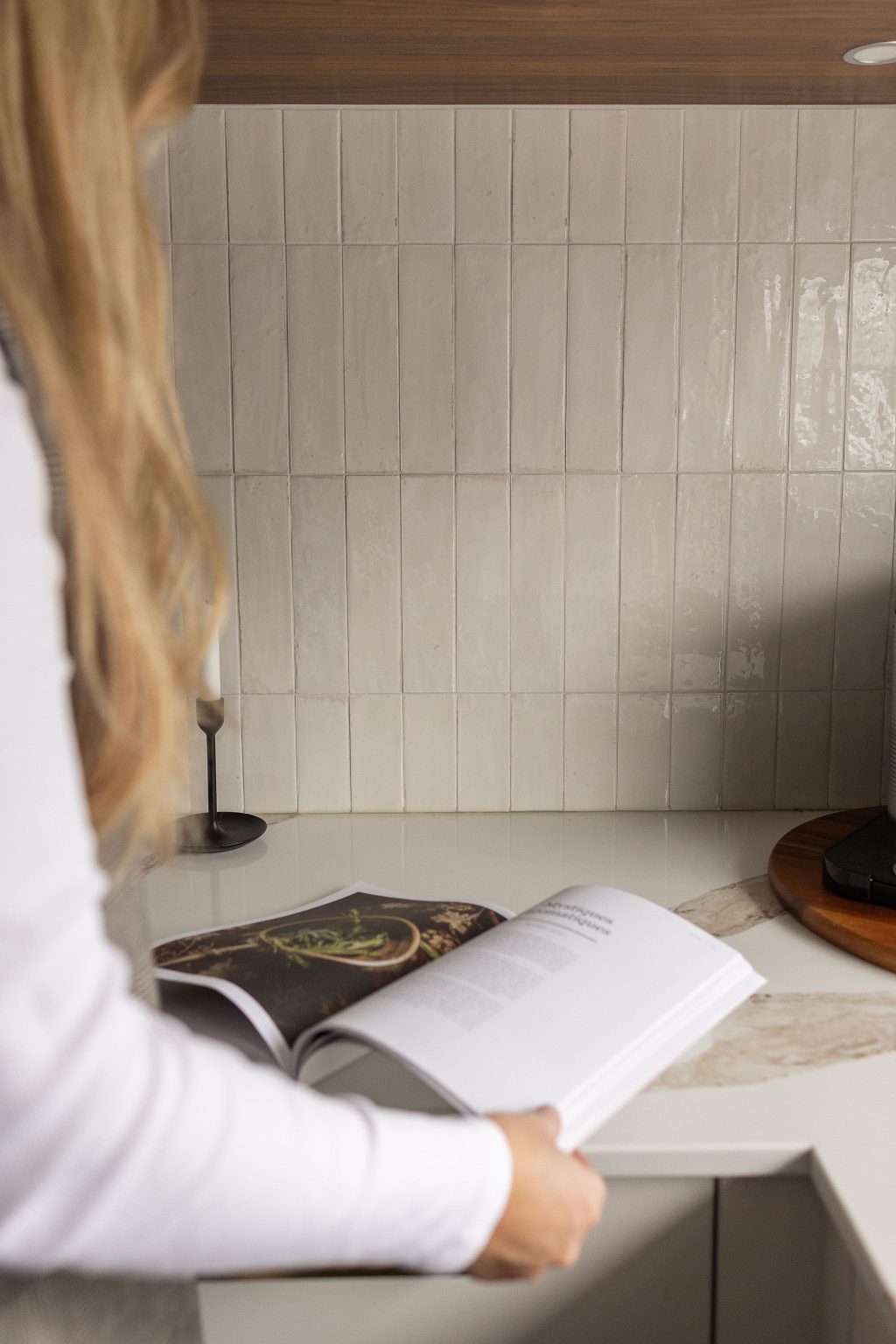
Slabs: a growing trend at the moment is the use of stone slabs as backsplashes. These large surfaces affixed to the wall provide a luxurious effect in continuity with the countertop, especially when the same material is used. You can also choose contrasting stone, metal or even glass to create this most distinguished look.
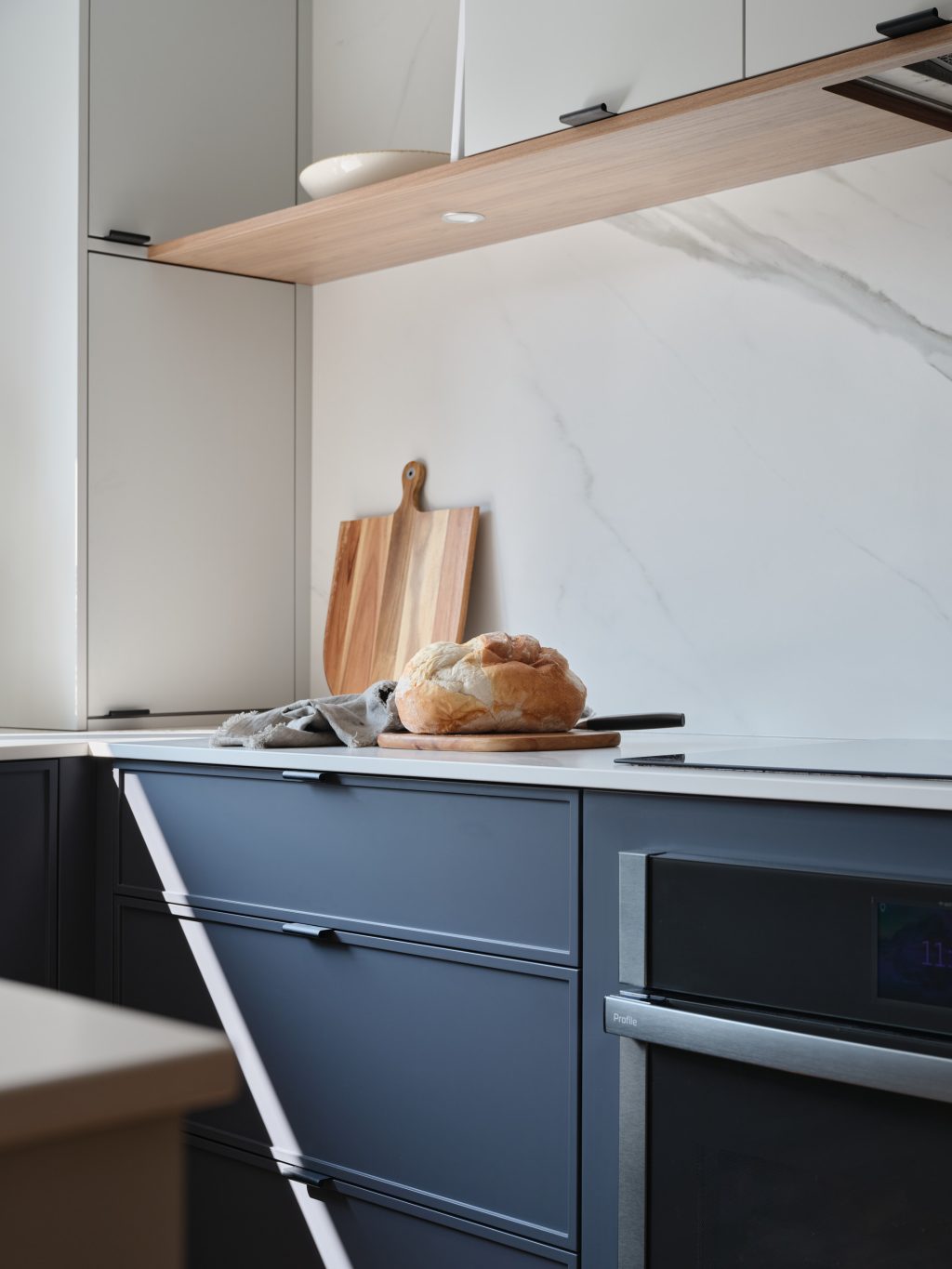
Grout: the same white tile can be used to create diametrically opposed atmospheres, thanks to the choice of grout. Tone-on-tone grouting offers a softer, more uniform effect, while a contrasting hue will systematically make the tiles stand out. What’s more, coloured grout can add a touch of whimsy at very little cost!
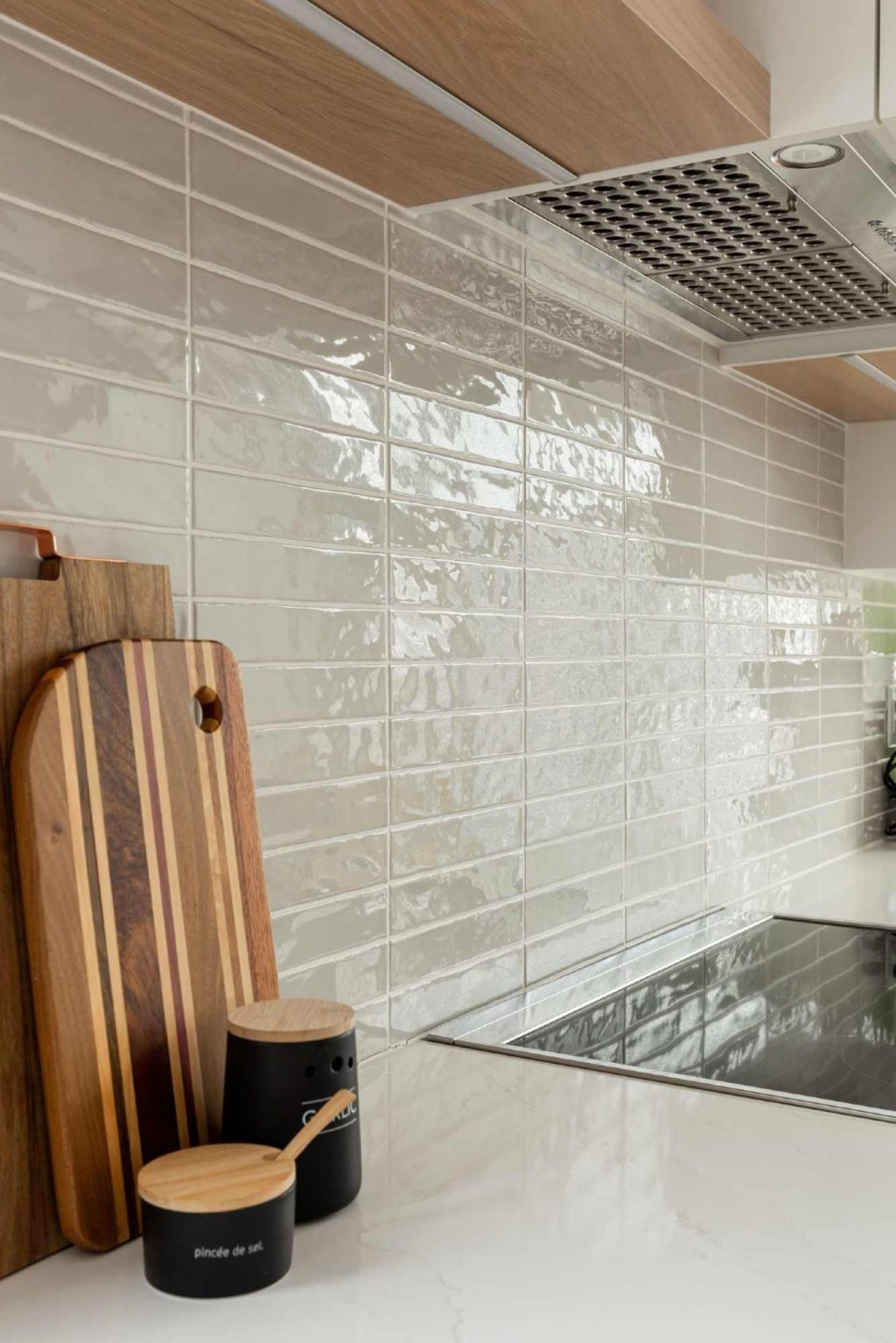
Tip: Collect samples of different materials to compare in your environment. This will help you visualize their appearance and adaptability with the light in your kitchen.
4. Determine the type of installation
First of all, work out the limits of the area to be covered by your backsplash. The usual installation height is 18″ above the countertops, just below the upper cabinets. However, you can create an impact by raising the area to the ceiling, if your layout allows.
If you choose tiles, you can also completely change the final result thanks to the type of installation:
Staggered: also known as offset laying, this involves installing tiles on the wall with a half-square offset between each row.
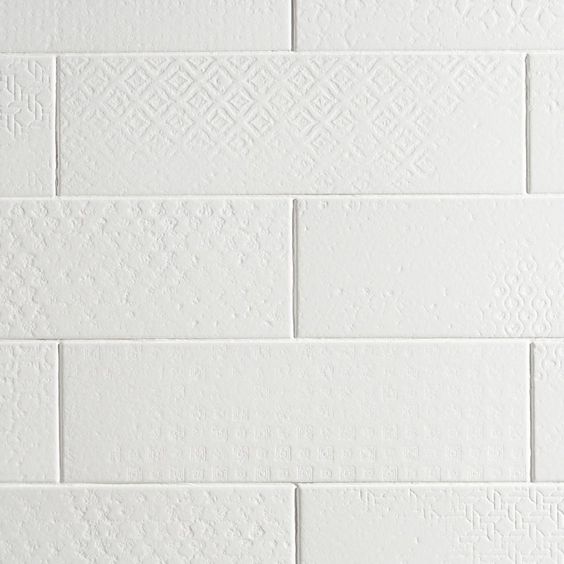
Source : Pinterest
Straight: this type of laying aligns tiles horizontally or vertically, creating a regular, orderly appearance.
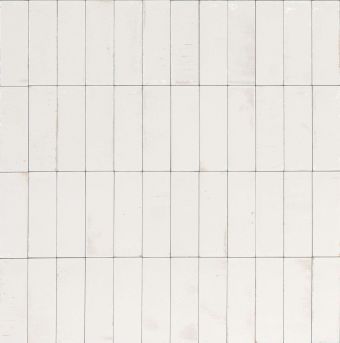
Source : Pinterest
Herringbone: rectangular tiles are laid at an angle to create an “L” shape.
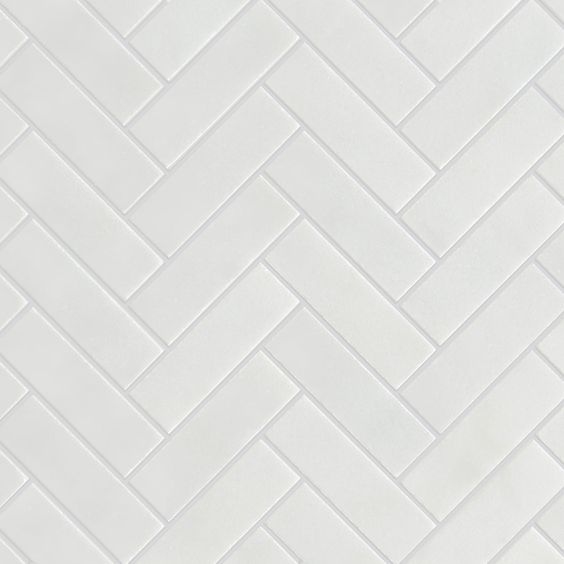
Source : Pinterest
Don’t forget to consider the finish of your backsplash. Some tile ranges offer finishing mouldings that blend perfectly with the chosen style. Otherwise, a metal profile is generally used to protect the tiles from wear and chipping.
5. Think maintenance
Finally, consider how easy it is to clean the material. Some require special care, while others are easier to maintain.
More porous tiles will tend to absorb the substances they come into contact with, while a glossy tile is generally easier to clean. If you opt for natural stone, a sealer will generally be required on an annual basis.
When it comes to grout, epoxy-based options are renowned for offering better stain resistance, especially if you choose a paler color.
Finally, don’t forget that the kitchen backsplash plays an important role in creating an atmosphere that is both coherent and stylish. Take the time to compare different options before making your final choice to create a space that perfectly matches your aesthetics and needs. If you have specific questions or more detailed requirements, don’t hesitate to seek professional advice to guide you in making your decision.
